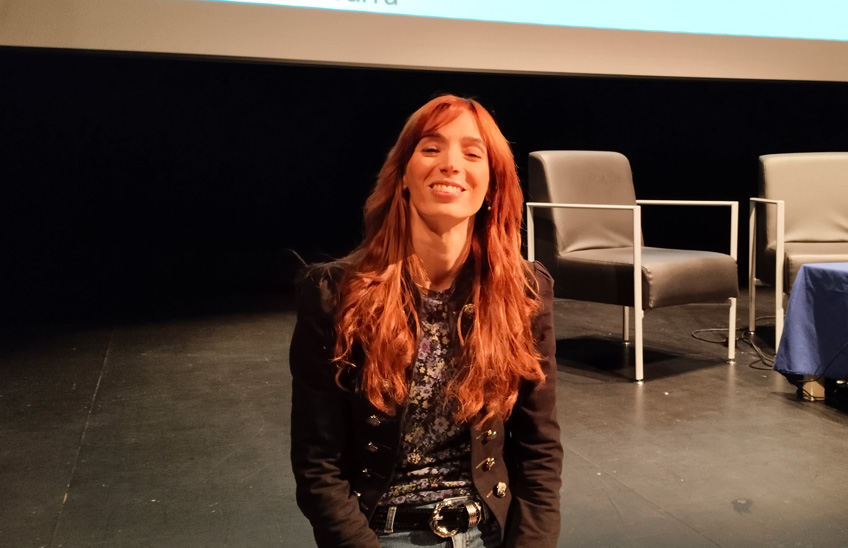Lorena Escuer, biologist: "The city is full of opportunity spaces that will help us to promote urban biodiversity".
The second session of the "Science and Biodiversity" series, organized by the Science Museum of the University of Navarra, brought together more than fifty people.

FotoCedida
/Lorena Escuer, during her visit to the Science Museum of the University of Navarra.
15 | 11 | 2024
More than fifty people participated in the second session of the "Science and Biodiversity" Cycle, held last Thursday, November 14 at Civivox Iturrama, and organized by the Science Museum of the University of Navarra in collaboration with the Civivox Network and the Spanish Foundation for Science and Technology (FECYT) / Ministry of Science, Innovation and Universities.
Under the title, "The role of Functional Biodiversity in the urban environment", biologist Lorena Escuer has been explaining from the basics of biodiversity (what it is and where it is found), to what citizens can do to preserve it in the urban ecosystem.
Lorena Escuer has indicated that there is a positive evolution of the cities with the passage of time and that now many of them have green spaces that they did not have before: "The reality of the cities now is that the green is on the facades, on the floors, in the buildings, there are more trees..., we have a greener structure and that is why we have insects and animals that did not appear before and now they are there".
For Escuer, cities are important biodiversity refuges, but he considers it necessary to plan the management of both urban flora and fauna, and for this it is essential that city work teams get involved. "The city is full of spaces of opportunity that will serve to promote urban biodiversity.
Lorena Escuer pointed out that the challenges of urban biodiversity are fourfold: to create and connect biomass and biodiversity, transforming green spaces into habitats for flora and fauna; to move from the ornamental to the truly functional; to connect citizens with nature; and to manage with people's health in mind.
The biologist from Huesca has insisted on the benefits of urban vegetation, from trees, shrubs, planters, flowers, and even what the population considers "weeds" and that reside in the tree wells: "we reduce the heat effect produced by asphalt, improve air quality, mitigate noise pollution in cities, provide resources to pollinators, reduce stress, and improve the welfare of people".
Escuer also explained the importance of dark biodiversity -which inhabits both soils and tree wells- as well as biological pest control. "The pest threshold is decreasing and it is because the urban ecosystem is more balanced by the presence of beneficial insects. Thanks to this reduced use of herbicides and other chemicals."
The last session of the "Science and Biodiversity" cycle will be held on Friday, November 15 at 19:30h. at Civivox Iturrama. The biologist Manuel Quirós will give the session"Biomimicry: regenerative disruptive innovation inspired by Nature".